Latest Reports
-
![Understanding the Impact of Dubai’s New Mandate for Digital Services Primary Image Dubai RB - Understanding the Impact of Dubai’s New Mandate for Digital Services]()
Understanding the Impact of Dubai’s New Mandate for Digital Services
Dubai’s new digital services law would add impetus to the structural reforms and national programs already underway by the United Arab Emirates (UAE) government to build a future-ready economy. Though the new law furthers the digital narrative by building a dynamic and integrated government system, it forces organizations in Dubai to revisit their business models and improve their digital capabilities. Also, the law comes with a mandate for organizations to comply within one year, based on their implementation phase and without imposing any extra fees on those they serve. This brings two significant implications for organizations: designing a strategy for developing or acquiring the digital talent for executing such large transformational projects within one year and scouting for the right technology partner
July, 2022
-
![Mainframe Services in a Hybrid Cloud World Kyndryl Core - Mainframe Services in a Hybrid Cloud World]()
Mainframe Services in a Hybrid Cloud World
After its spinoff from IBM, Kyndryl inherited managed infrastructure services and cloud services. This research byte focuses on Kyndryl’s Core Enterprise and zCloud practice led by Group Leader Jamie Rutledge. It organized a webinar for Avasant advisors and enterprises that focused on the shift from mainframe to cloud environments. The company highlighted how it is helping enterprises implement a hybrid cloud strategy through its mainframe modernization services and how it is strengthening its partnerships with cloud service providers to provide a hybrid environment. The webinar also gave an insight into Kyndryl’s organic and inorganic strategies to strengthen its capabilities.
July, 2022
-
![IT Budgets Surge Ahead Despite Choppy Economic Waters IT Operational Spending 2 - IT Budgets Surge Ahead Despite Choppy Economic Waters]()
IT Budgets Surge Ahead Despite Choppy Economic Waters
IT budgets have faced stormy weather in recent years: a global pandemic, a brief recession brought on by lockdowns, supply chain disruptions, war in Ukraine, and a year and a half of rising inflation. At each phase, we reported that IT budgets might be negatively impacted, and each time, enterprises refused to cut IT spending. It is starting to become clear that most enterprises view IT as a strategic resource in weathering the economic challenges of the last few years. IT is no longer seen as a cost center but as a strategic resource than can impact the top and the bottom line. This research byte is a brief description of some of the findings in our IT Spending and Staffing Benchmarks 2022/2023 study.
July, 2022
-
![IT Spending and Staffing Benchmarks 2022/2023: Chapter 1: Executive Summary Landscape CE ISS report 02 scaled - IT Spending and Staffing Benchmarks 2022/2023: Chapter 1: Executive Summary]()
IT Spending and Staffing Benchmarks 2022/2023: Chapter 1: Executive Summary
This chapter provides an overview of the key findings from the full study and describes the contents of the subsequent chapters. It also includes information on the study participants and the survey methodology.
July, 2022
-
![IT Spending and Staffing Benchmarks 2022/2023: Chapter 2: Composite Benchmarks Landscape CE ISS report 03 scaled - IT Spending and Staffing Benchmarks 2022/2023: Chapter 2: Composite Benchmarks]()
IT Spending and Staffing Benchmarks 2022/2023: Chapter 2: Composite Benchmarks
This chapter provides composite metrics for all of the organizations surveyed, across all industry sectors and organization sizes. The key metrics provided in this chapter are listed in the Key Metrics Descriptions section above.
July, 2022
-
![IT Spending and Staffing Benchmarks 2022/2023: Chapter 3A: Benchmarks for Small Organizations Landscape CE ISS report 04 scaled - IT Spending and Staffing Benchmarks 2022/2023: Chapter 3A: Benchmarks for Small Organizations]()
IT Spending and Staffing Benchmarks 2022/2023: Chapter 3A: Benchmarks for Small Organizations
Chapter 3A provides benchmarks for small organizations, across all sectors. Small organizations are defined as those having IT operational budgets of less than $5 million. For a complete description of all metrics, please see the full study description. There are 79 respondents in the small-company sample.
July, 2022
-
![IT Spending and Staffing Benchmarks 2022/2023: Chapter 3B: Benchmarks for Midsize Organizations Landscape CE ISS report 05 scaled - IT Spending and Staffing Benchmarks 2022/2023: Chapter 3B: Benchmarks for Midsize Organizations]()
IT Spending and Staffing Benchmarks 2022/2023: Chapter 3B: Benchmarks for Midsize Organizations
Chapter 4 provides benchmarks for process manufacturers. Process manufacturers are defined as those where the production process adds value by mixing, separating, forming, or chemical reaction. The sector includes manufacturers of chemicals, petrochemicals, semiconductors, pharmaceuticals, dietary supplements, food and beverage products, cosmetics, building materials, packaging materials, steel, glass, paper products, and other process-manufactured goods. The 56 respondents in the sample range in size from a minimum of about $50 million to a maximum $60 billion in annual revenue.
July, 2022
-
![IT Spending and Staffing Benchmarks 2022/2023: Chapter 3C: Benchmarks for Large Organizations Landscape CE ISS report 06 scaled - IT Spending and Staffing Benchmarks 2022/2023: Chapter 3C: Benchmarks for Large Organizations]()
IT Spending and Staffing Benchmarks 2022/2023: Chapter 3C: Benchmarks for Large Organizations
Chapter 3C provides benchmarks for large organizations, across all sectors. Large organizations are defined as those having IT operational budgets of more than $20 million. For a complete description of all metrics, please see the full study description. There are 78 respondents in the large-company sample.
July, 2022
-
![IT Spending and Staffing Benchmarks 2022/2023: Chapter 4: Process Manufacturing Sector Benchmarks Landscape CE ISS report 07 scaled - IT Spending and Staffing Benchmarks 2022/2023: Chapter 4: Process Manufacturing Sector Benchmarks]()
IT Spending and Staffing Benchmarks 2022/2023: Chapter 4: Process Manufacturing Sector Benchmarks
Chapter 4 provides benchmarks for process manufacturers. Process manufacturers are defined as those where the production process adds value by mixing, separating, forming, or chemical reaction. The sector includes manufacturers of chemicals, petrochemicals, semiconductors, pharmaceuticals, dietary supplements, food and beverage products, cosmetics, building materials, packaging materials, steel, glass, paper products, and other process-manufactured goods. The 56 respondents in the sample range in size from a minimum of about $50 million to a maximum $60 billion in annual revenue.
July, 2022
-
![IT Spending and Staffing Benchmarks 2022/2023: Chapter 5: Discrete Manufacturing Sector Benchmarks Landscape CE ISS report 08 scaled - IT Spending and Staffing Benchmarks 2022/2023: Chapter 5: Discrete Manufacturing Sector Benchmarks]()
IT Spending and Staffing Benchmarks 2022/2023: Chapter 5: Discrete Manufacturing Sector Benchmarks
Chapter 5 provides benchmarks for discrete manufacturing organizations. Discrete manufacturers are defined as those where the production process adds value by fabricating or assembling individual (discrete) unit production. The category includes manufacturers of consumer products, athletic equipment, industrial equipment, telecommunications equipment, aerospace products, furniture, auto parts, electrical parts, medical devices, and electronic devices, among other products. The 56 respondents in this sample range in size from a minimum of about $50 million to over $100 billion in annual revenue.
July, 2022
-
![IT Spending and Staffing Benchmarks 2022/2023: Chapter 6: Banking and Finance Sector Benchmarks Landscape CE ISS report 09 scaled - IT Spending and Staffing Benchmarks 2022/2023: Chapter 6: Banking and Finance Sector Benchmarks]()
IT Spending and Staffing Benchmarks 2022/2023: Chapter 6: Banking and Finance Sector Benchmarks
Chapter 6 provides benchmarks for banking and financial services companies. The firms in this sector include commercial banks, investment banks, credit unions, mortgage lenders, consumer finance lenders, and other types of lenders and financial services providers. The 24 respondents in this sector range in size from a minimum of about $50 million to over $40 billion in annual sales.
July, 2022
-
![IT Spending and Staffing Benchmarks 2022/2023: Chapter 7: Insurance Sector Benchmarks Landscape CE ISS report 10 scaled - IT Spending and Staffing Benchmarks 2022/2023: Chapter 7: Insurance Sector Benchmarks]()
IT Spending and Staffing Benchmarks 2022/2023: Chapter 7: Insurance Sector Benchmarks
Chapter 7 provides benchmarks for insurance companies. The firms in this sector include companies that sell medical and dental insurance, life insurance, property and casualty insurance, auto insurance, disability insurance, and other types of insurance. The 17 respondents in this sector range in size from a minimum of $100 million to over $100 billion in annual revenue.
July, 2022



















